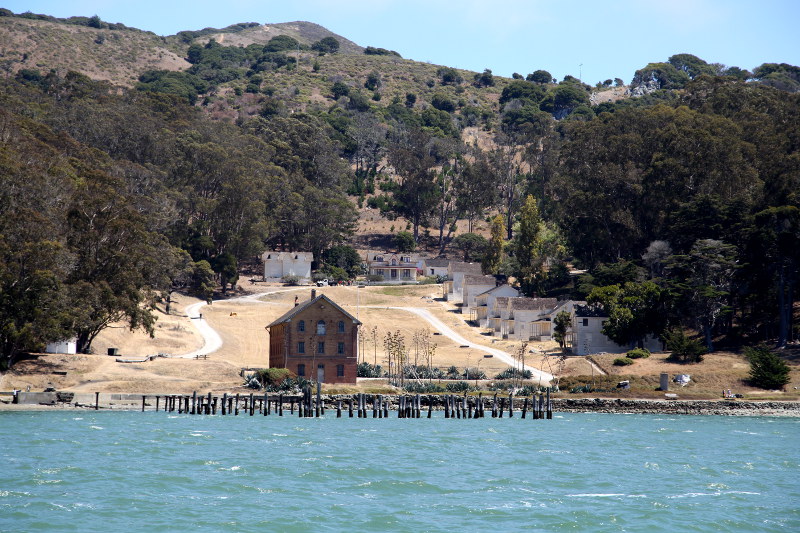Angel Island is one of the three islands charted by Juan de Ayala when he first entered the San Francisco Bay in 1775. He was asked to explore the area to determine if Russians had established a settlement; Ayala anchored in what is now known as Ayala Cove on the northwest part of the island. Before leaving he named it Isla de los Ángeles.
The land sat relatively unsettled (except for cows) until the American Civil War when the U.S. Army began to worry about Confederate raids in gold country and an attack on San Francisco. In 1863, Camp Reynolds and two artillery batteries (plus Fort Alcatraz) were built to protect San Francisco from this possibility. They saw no action with the Civil War but still expanded the military facilities to Fort McDowell on the Eastern part of the island and deemed the base a quarantine and discharge station for troops returning from war. This was used frequently until the end of World War I.
It was not only troops that were processed here. Between 1910 and 1940, the Angel Island Immigration Station (known more commonly as The Ellis Island of the West) processed hundreds of thousands of Asian immigrants who came to the US for a better life. Instead of a land full of milk and honey, they faced questioning, racism, and detainment for years. To help with the hopelessness of the situation, many carved poems into the walls of the barracks. These are actively being rediscovered and preserved.
To get to Angel Island, we took one of the combination Angel Island / Alcatraz tours. In hindsight, the proper way to see Angel Island is via some sort of fitness device: by boat, by kayak, by bicycle, or on foot. It’s true you can also see Angel Island by Segway but all the Segway tours we saw didn’t stop. Angel Island is a place to meander and explore. It’s not a place to rush through as a sightseer and you certainly need more than a couple of hours (which is all the time we had).
We travelled the island via the tram… sort of. I would NEVER EVER EVER EVER recommend a tram tour of the island to anyone unless they are infirm, disabled or just plain lazy. The trams spit up dirt and fumes in your face, you rush past all the sites if you’re unfortunate enough to be on the left-hand side of the tram you don’t see anything because all the sites are on the right and there are too many people mashed into one vehicle, and the audio track that plays during the tour gives a vague overview of the site that is completely laughable.
When we heard the words “and to the left, you will see a Eucalyptus tree” like we were all in the second grade (just after hearing a really bad bad bad butchering of the word shark in Spanish), we decided the tour was a complete waste of our two hours and it was time to hop off (much like the lime forehead incident in Goa).
We were supposed to spend an hour on this unfortunate and unpleasant machine, but we hopped off at one of the artillery batteries and walked back to Ayala Cove. But not before freaking everyone out because we had the audacity to try and leave the tour. Gasp the world ended right there and heaven forbid we actually use our feet!
This is when the island visit became a pleasant and enjoyable experience. Our two hours were spent exploring Camp Reynolds, wandering around the old hospital building, pausing to take in the views, playing on the beach at Ayala Cove, eating our picnic lunch on a log, and talking to kayakers and runners who were on the island for a race.
Angel Island feels to me like the kind of place where you would spend the lazy days of summer camping, relaxing and enjoying the sun. I think they should get rid of the trams.
